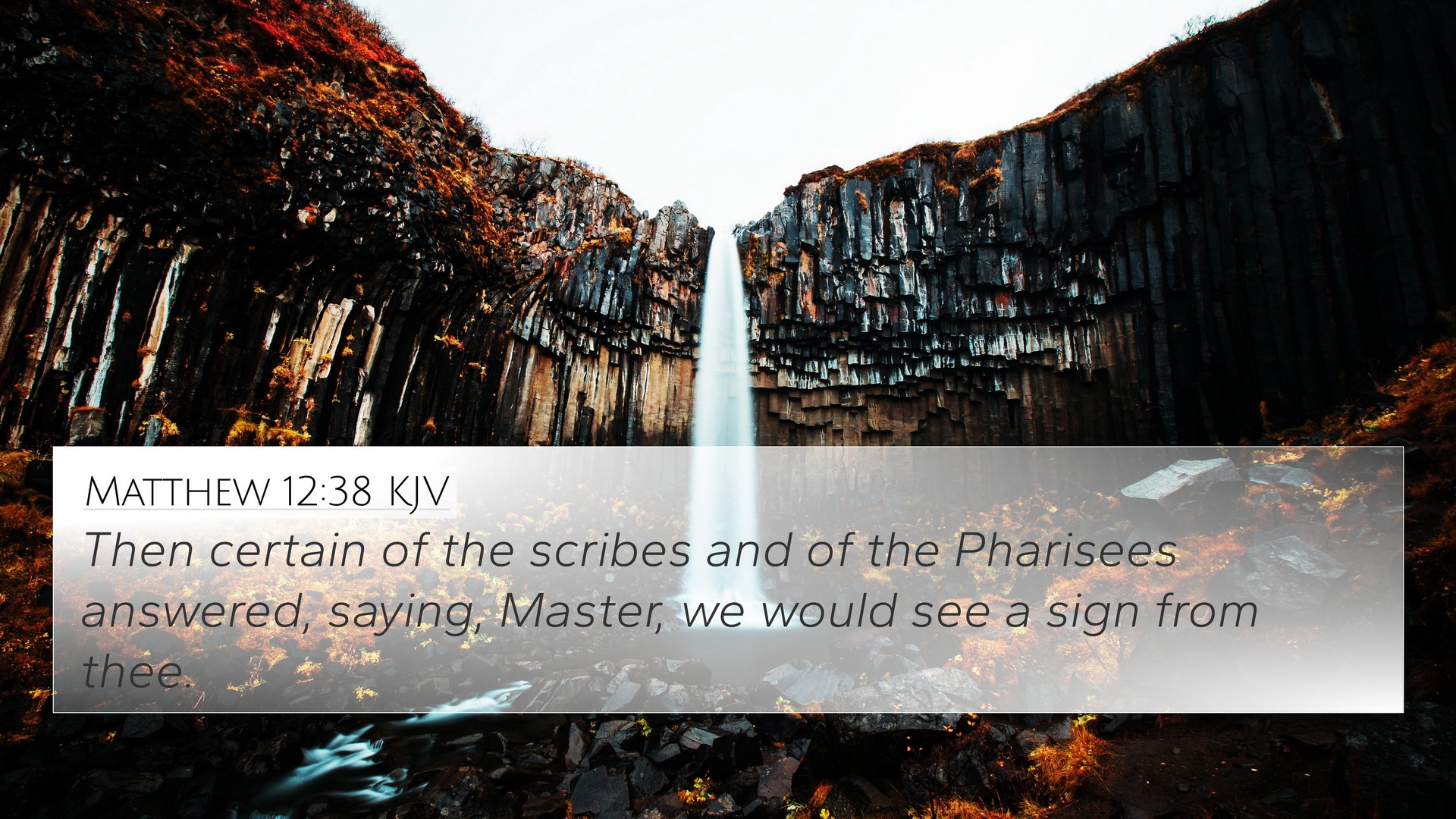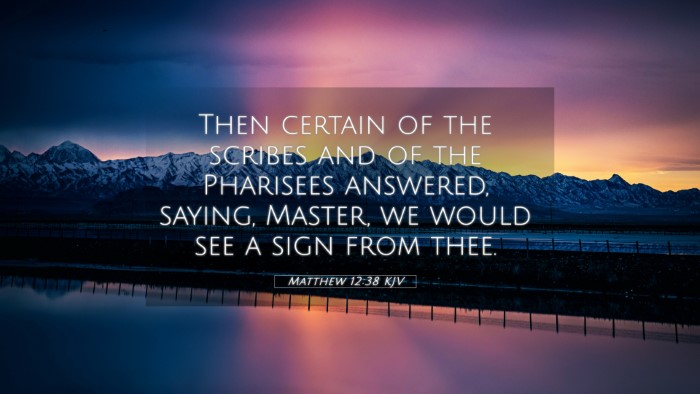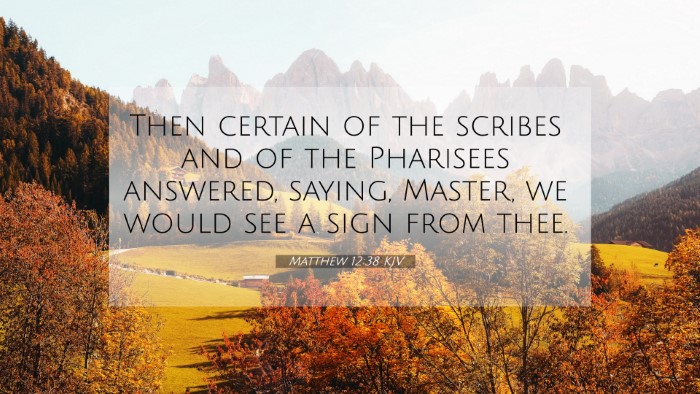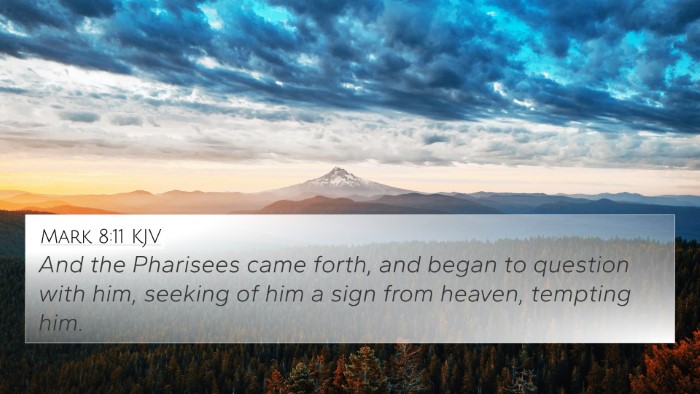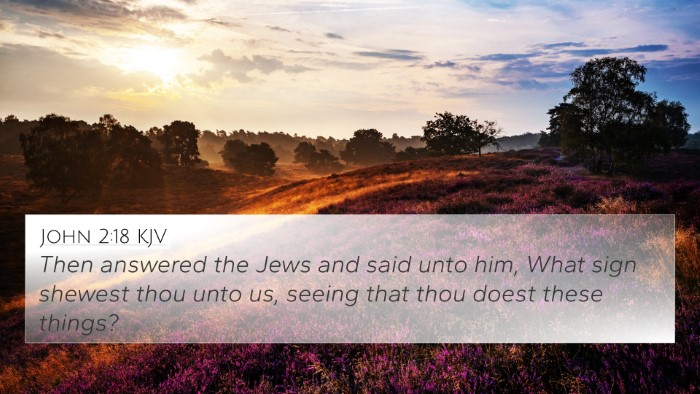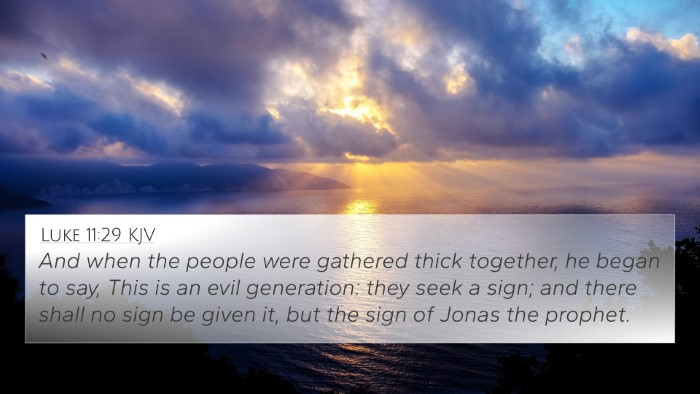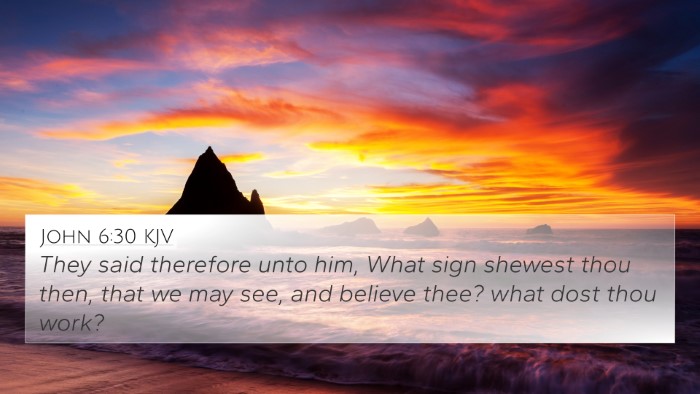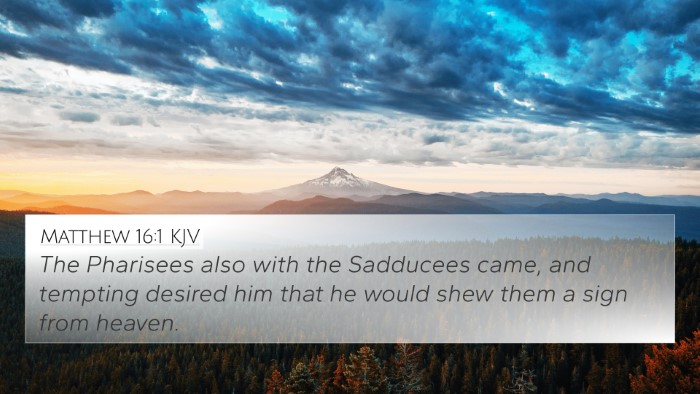Understanding Matthew 12:38
Bible Verse: "Then certain of the scribes and of the Pharisees answered, saying, Master, we would see a sign from thee." (Matthew 12:38)
Summary of Meaning
This verse captures a significant moment in Jesus’ ministry where the religious leaders seek a miraculous sign to validate His authority. The request for a sign reveals their skepticism and the spiritual blindness that often accompanies self-righteousness. Historical context shows that these leaders, devoted to the law, found it hard to accept the plain teaching and powerful works of Christ.
Commentary Insights
- Matthew Henry:
Henry points out the irony in the demand for a sign. The Pharisees and scribes had already witnessed numerous miracles performed by Jesus yet demanded more evidence. This reflects an unwilling heart to accept the truth. Their desire for a showman-like miracle demonstrates a misunderstanding of faith, which should not solely rely on signs but on the word of God.
- Albert Barnes:
Barnes emphasizes the significance of asking for a sign during the ministry of Jesus. It implies that the religious leaders remained unconvinced despite the works He had done. Barnes notes that the term "sign" refers to a supernatural act intended as evidence of divine authority, yet these signs are ignored or misinterpreted by those not seeking truth.
- Adam Clarke:
Clarke elaborates on the theological implications of the request. He argues that the demand for a sign showcases a lack of humility and deceitful intentions of the Pharisees. Clarke suggests that true belief in Christ should stem from recognizing His words and deeds rather than demanding proof, as faith is a matter of the heart rather than visual evidence.
Cross-References Related to Matthew 12:38
- Matthew 16:1: The Pharisees and Sadducees came to Jesus and asked Him to show them a sign from heaven.
- Luke 11:29-30: Jesus speaks of the generation asking for a sign and highlights the sign of Jonah as the ultimate proof.
- John 2:18: The Jews asked Jesus for a sign for His actions in the temple, reflecting their similar demand.
- 1 Corinthians 1:22: Paul notes that Jews seek after signs, which emphasizes the ongoing pattern of seeking proof over faith.
- Hebrews 11:1: Faith is defined as the evidence of things not seen, contrasting the demand for miraculous signs.
- Matthew 4:7: Jesus responds to Satan with Scripture, indicating that signs should not dictate faith.
- John 6:30: The crowd asked Jesus to perform signs similar to those of Moses, highlighting their expectation versus true faith.
- Romans 10:17: Faith comes by hearing, not seeing, connecting the idea of believing without needing miraculous signs.
- Revelation 13:14: The false prophet performs great signs, reinforcing the notion that signs can be misleading.
- Matthew 12:39: Jesus responds to their demand by stating no sign, except that of the prophet Jonah, would be given.
Thematic Connections
The theme of seeking signs versus the call to faith resonates through the scriptures. This interaction invites contemplation on:
- Faith vs. Skepticism: The urgent need for signs can often stem from doubt in God’s word.
- The Nature of True Miracles: Miracles serve to confirm God's presence but should lead one to a deeper faith rather than mere curiosity.
- The Role of Leadership: Leaders are often held to a higher standard of faith; their skepticism can lead others astray.
Application to Study
Understanding Matthew 12:38 in the context of skeptics’ demands provides critical insight when conducting a Bible cross-reference study. The verse encourages readers to see beyond the signs and delve deeply into spiritual discernment. The tool of bible cross-reference guides can be applied here efficiently, revealing connections that enhance understanding and faith.
Conclusion
Matthew 12:38 encapsulates the challenges of faith confronted by signs. By studying this verse alongside its cross-references and related commentaries, individuals are prompted to engage faith with reason, encouraging a stronger spiritual journey. This exploration of scriptural links not only bolsters understanding but also fosters greater appreciation for the cohesive narrative of the Bible.
Resource Suggestions for Further Study
- Bible Concordance for locating verses and themes.
- Works by theologians that provide deeper insight into the New Testament.
- Commentaries focusing on the Gospels for comparative Bible verse analysis.
